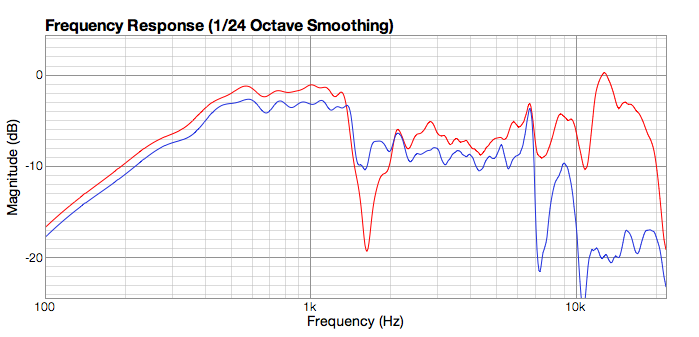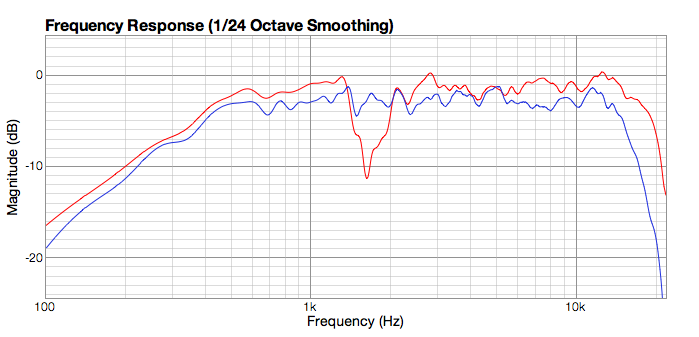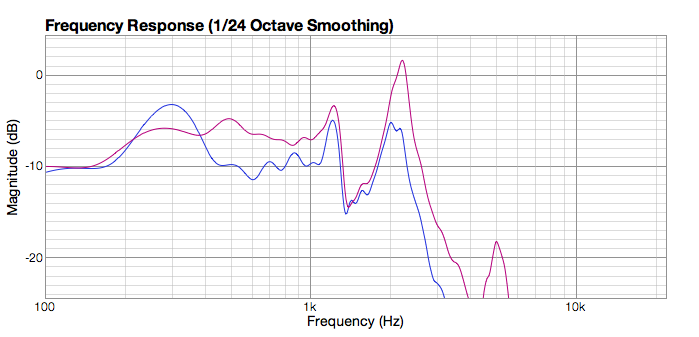
With much help from Paul Spencer, I was able to do some gated measurements on the Francesca prototype. One thing we puzzled over was the frequency response of the midrange. Here is the 1m measurement (gate is about 8ms):
 Red is on-axis, blue is at (approx) 30 degrees. The frequency of the dip, around 1700 Hz, doesn’t correspond to any of the baffle dimensions! If it were the first dip in the dipole response, a 30cm wide baffle should exhibit this dip around 1150 Hz, not at 1700 Hz. And why does the depression continue up past 5 kHz?
Red is on-axis, blue is at (approx) 30 degrees. The frequency of the dip, around 1700 Hz, doesn’t correspond to any of the baffle dimensions! If it were the first dip in the dipole response, a 30cm wide baffle should exhibit this dip around 1150 Hz, not at 1700 Hz. And why does the depression continue up past 5 kHz?
This was a puzzlement. In the end, I just put in a big shelf boost to counteract it. Here is the result, after eq, with the tweeter running as well, crossover point is 5 kHz at 48 dB/octave:
 At 30 degrees, it looks great. We decided to settle on that for now. The in-room response ended up looking much better than the version I had done the previous day, with less overall response eq applied. (I can’t post the in-room measurements, because I seem to have not saved them… note to self – always make a screenshot after getting a useful result, so at least I will have that if I mess up…)
At 30 degrees, it looks great. We decided to settle on that for now. The in-room response ended up looking much better than the version I had done the previous day, with less overall response eq applied. (I can’t post the in-room measurements, because I seem to have not saved them… note to self – always make a screenshot after getting a useful result, so at least I will have that if I mess up…)
The response dip shows up in the woofer measurements as well, although at a slightly lower frequency (top woofer in magenta, bottom in blue):
 The measurement was done with the microphone at the same position as before, between the mid and tweeter, so the bottom woofer is further away than the top one.
The measurement was done with the microphone at the same position as before, between the mid and tweeter, so the bottom woofer is further away than the top one.
I’m a bit mystified by this, as it doesn’t match the theory at all. I’m starting to wonder if the flimsy baffle is able to resonate in such a way as to absorb energy in that frequency range – is that possible? Anyway, something to explore further, although perhaps that will be on the next version of the prototype at this point.
1 Comment